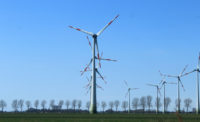The manufacturing industry presents a lot of high-risk scenarios within day-to-day operations, from lone-worker safety concerns to the risks associated with operating heavy equipment. Now that the COVID-19 pandemic has changed how nearly every industry operates, there are even more safety concerns to consider.
Manufacturing facilities have always been faced with the challenge of maintaining a safe environment for their workers, but now there is the added layer of properly establishing and adhering to COVID-19 safety protocols, as well as making sure that the plant is adapting to constantly changing regulations. Accomplishing all of this is already a difficult task, not to mention doing it with potentially reduced staff and increased workloads and responsibilities. To reduce that burden, manufacturing facilities should lean on environmental monitoring and other technologies to help keep employees safe.
Leveraging environmental monitoring in your manufacturing facility
Environmental monitoring technology combined with an automatic alerting platform can help manufacturers keep an eye on their facility whether staff are present or not. With reduced staff, this can be especially important because it can help catch an emergency that may have otherwise gone unnoticed. A malfunctioning piece of equipment or a door that was left opened can cause serious problems if they go undetected, and environmental monitoring technology can aid in catching these issues early to avoid costly repairs, employee injuries, or even a potential plant closure while long-term repairs are made.
For instance, if a door that is meant to be closed is left open, a sensor can immediately detect the breach. This allows the situation to be resolved immediately, whereas an employee may not have become aware of the situation for an extended period of time, leaving the door open to intruders or other looming risks. With the added integration of an automated alerting platform, this information can be sent out to the proper personnel right away to provide a call to action to diffuse the malfunction. This alert can contain detailed information about the situation, such as what door was left open,where the door is in the building, and how long it has been open. When staff is provided with this information, they can take the proper steps to remedy these situations, potentially avoiding an emergency and costly long-term remedies.
Making the best use of existing plant technology to improve safety
A manufacturing facility is already full of a wide variety of technologies, such as cameras, temperature systems, fire/smoke detection, and door access control to name a few. These are typically siloed systems, making them difficult to manage. When integrated into an automated alerting platform, the systems can all work together to become a more wholistic safety net for the plant.
With these technologies and an automated alerting platform combined, manufacturing facilities can implement door, temperature, pressure and water level, air quality, and equipment monitoring all in one place. With the ability to detect any unwanted changes or problems with these systems, manufacturers are able to take corrective action and provide their employees with a more safe and secure work environment.
Deploying automated alerting to address real-time safety concerns
An automated alerting platform can also provide improved lone-worker safety. Just like the technologies listed above, mobile duress for lone workers can be integrated into the platform as well. This means that a worker can carry a mobile duress button or similar device with them on the job, and if something were to go wrong they could immediately alert someone they needed help at the push of a button. These alerts can contain specific information such as who alerted for help and their location, and can then be assigned to a specific individual or a whole group of people to take action. By ensuring anyone can receive help in case of an emergency, workers can feel comfortable even if they are working with reduced staff during the pandemic.
Certain triggering events can even be assigned to contact first responders immediately. For example, if a fire is detected or a lone-worker alerts that they were in an accident, that alert can automatically contact first responders and provide them with valuable, potentially life-saving information. It’s also possible for the alert to contain live video feed pulled from the camera(s) nearest to the triggered device if all plant technology is integrated into one platform. With this information, first responders can be dispatched as soon as possible, potentially saving lives or avoiding serious property damage. Whether there is a fire, a medical emergency, a break-in, or another life-endangering situation, manufacturers can make sure it’s dealt with quickly and properly with proactive monitoring.
Although the pandemic has caused many changes in protocol and operations, it didn’t change the ultimate goal of providing manufacturing workers with a safe and healthy environment. By increasing safety measures now, manufacturers are not only responding to COVID-19, but are investing in the long-term safety of their employees and their facility.









